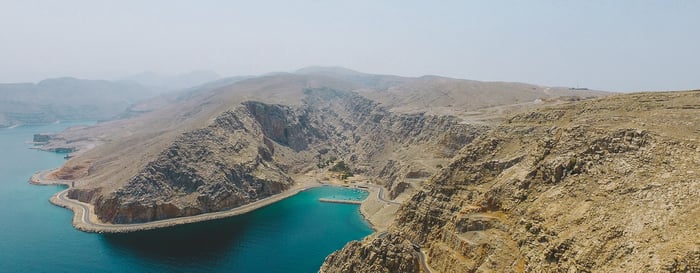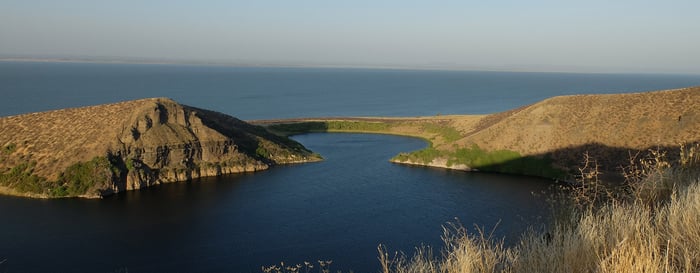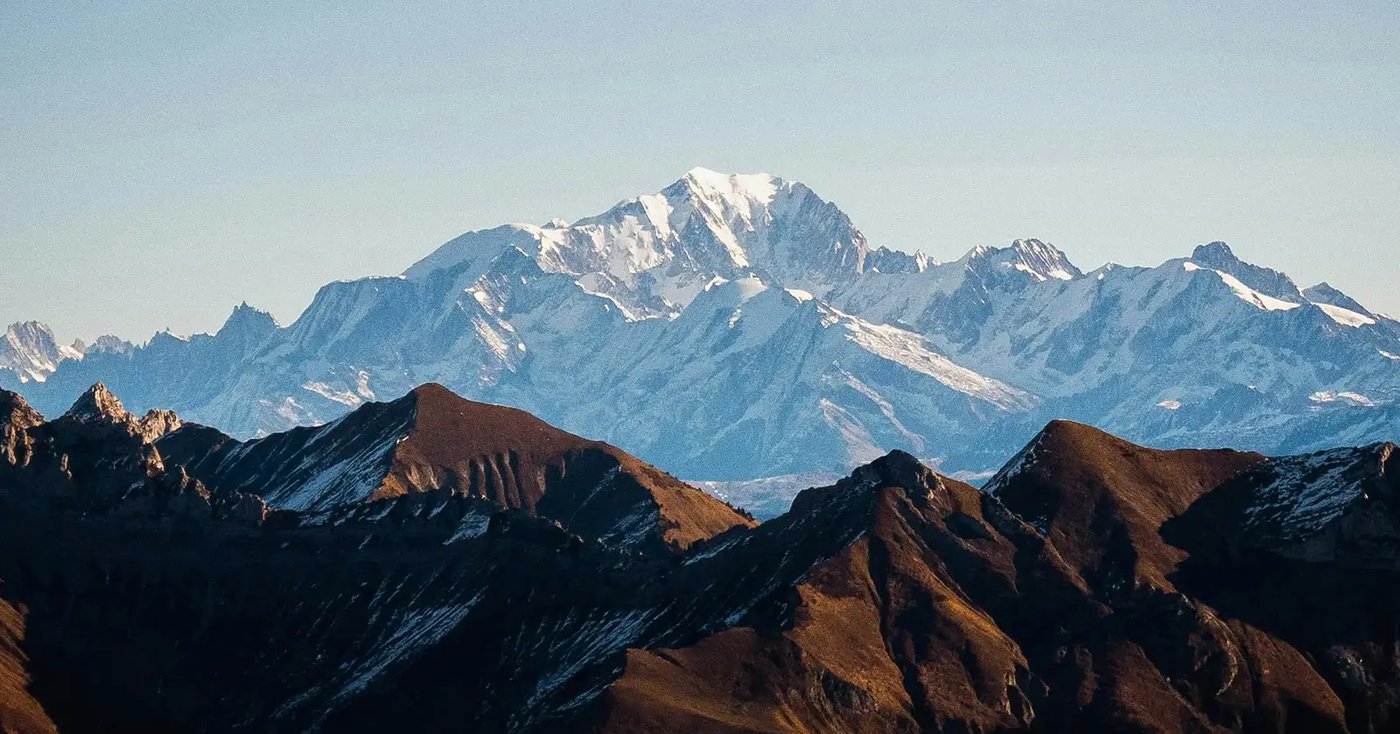The taxi driver rubbed his stubbled chin thoughtfully. “No, I don’t know anything about skiing in India,” he said, and turned to switch the ignition on, leaving Srinagar International Airport as a hazy blur in the cracked windshield. “That happens in America, or in Europe. Somewhere else, but not here. You’ve come on a fool’s errand.”
It had only been a few weeks earlier, while online, that my curiosity had been piqued by Gulmarg in Kashmir. It was India’s new winter playground, I had read, a spiced-up resort in the western Himalaya to compete with Verbier or Val d’Isere, with the same high-altitude ridgelines, tracts of wild pine, and virgin slopes that promised that very same sense of raw exhilaration. But more than that: it was home to the world’s highest ski lift, a trip whisking visitors to 3,979m and five kilometres of off-piste vertical. It sounded breathtaking, both physically and mentally, and was a step closer to heaven, as the locals liked to claim.
Yet the area wasn’t without its problems. Kashmir first came to the attention of adventurers and liberals in the late 1960s and has remained in and out of the news ever since. Tucked away at the northernmost tip of India, the region has witnessed decades of political and military uncertainty, including tribal infighting, insurgencies, violent strikes, political curfews, and three cross-border wars with neighbouring Pakistan. Hardly, a dream scenario for tourism and the piebald summits of Mount Apharwat.
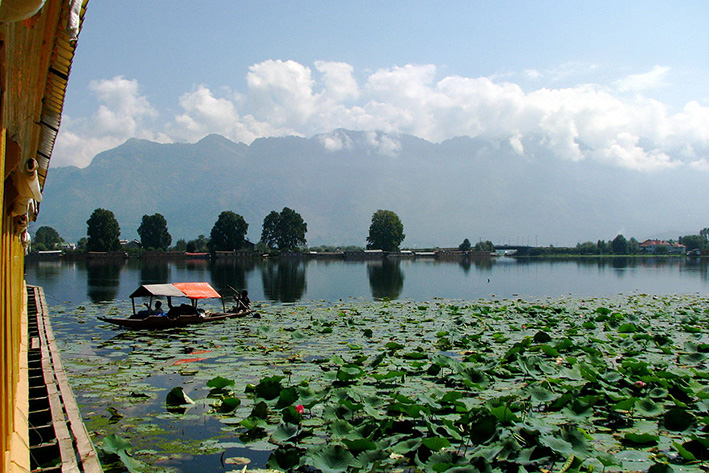
As luck would have it, stability had returned, and a plan began to form. I would get to see another side of India, one that was free of selfie-stick holding tourists. I asked my diehard ski friends and none of them had ever pursued the idea of trying it. “Sounds pretty extreme,” one said. Which was exactly why I had to go. It was a new frontier for winter sports in Asia and a rare chance to ski on the roof of the world.
Srinagar, the state capital, sprawls around the edges of the mirror-clear Dal Lake, a tea-cup shaped reservoir to rival any on a Swiss Alpine postcard. I stopped first by the painted houseboats, their wood-lacquered fronts and brightly-coloured tops peeling in the sun. Boatmen with salt and pepper beards were busy jostling for the tourist trade (a quick lap of the lake on a shikara, or Indian gondola), but I was preoccupied by the telling contours of peaks on the western horizon, turning dusky pink as night fell. Above, somewhere in the folds, Gulmarg nudged softly against the snow-line.
The next morning, the drive from the lakeside to the resort at 2,650m lasted two hours, culminating in an uphill battle against a 12km mountain pass that once took days to overcome. A storm had blown in and the gondola was closed for the afternoon, but there was still life lurking in the glades. A couple of grey langur monkeys, shivering in the trees, bounded out across the piste, off to find warmth and better shelter. I followed, wading across the deepening drifts to the hotel like an elephant. “There will always be tomorrow,” the manager said, as he saw me lingering by the windows later that afternoon. “Good things come to those who wait, you British say, am I right?” Something about his boundless positivity made me genuinely believe that somehow we’d both be right.
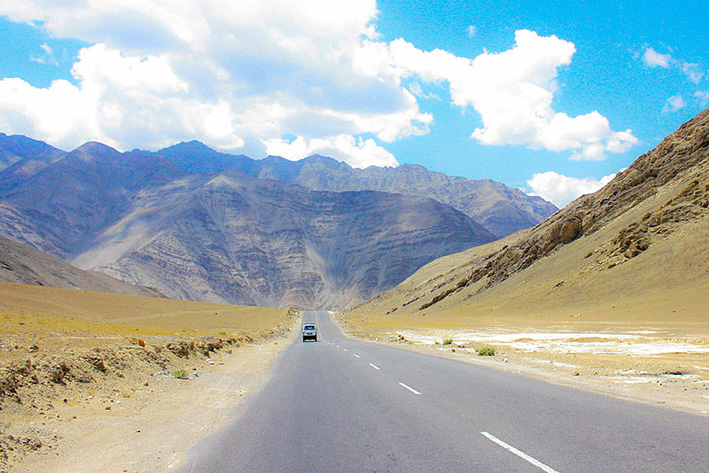
When it came the next day, the sky broke into a brilliant sapphire blue, and the gondola whirred to life. It scooped me up, alongside five others, shuttling us like sardines in a can from the village into the wilds of the sugar bowl Kongdoori Valley. The second stage, directly up the stone-face of Kongdoori Mountain, followed with a 12-minute vertiginous adrenalin hit – kestrels were flying in a range outside the frosted windows – and spindrift hung in the air like icing sugar. Here, above what felt like all of India, the horizon stretched deep into Pakistan and spied just long enough across the Himalaya plateau into Tibet to give the Chinese itchy trigger fingers.
In the valleys below Mount Afarwat, resplendent in soft light, the turf-roofed houses of the Gujar people acted as a reminder of just how far this was from the rest of the subcontinent. Twenty-first century India, with its Bollywood stars, fast-rising condos, and call centres, couldn’t have been further away.
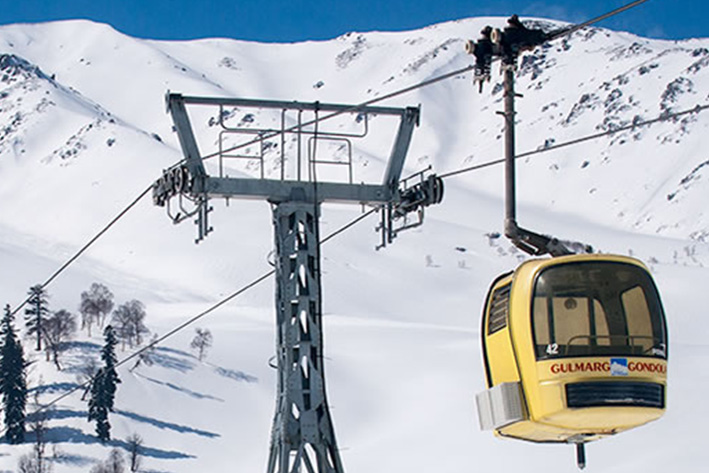
With our boots firmly clipped into our fat skis and pole straps wrapped around gloves, our first run down the mountain took us into a shoulder-deep powder paradise and spat us out into the unfortunately-named Avalanche Dam. The snow was fluffy, giving our skis added bounce. The extraordinary width and length of the terrain meant that I soon started clocking up the miles and my thighs began to burn. Above, the muted buzz of a helicopter reminded us that we were not alone. Giving the first ride of the day into the backcountry, it signalled there were others even luckier than us. They simply had deeper pockets to afford the even wilder off-piste, an area so unfathomably large it had barely been mapped.
Later, I reflected on the day’s skiing over an excellently brewed pot of kahwah, a Kashmiri tea made with saffron and spices, and a plate of richly-spiced lamb rogan josh. It had been an epic first day of white-knuckle thrills and giddying highs. Cease-fires and international bureaucracy permitting, I thought, this’ll remain a back-country wonderland for years. Which meant there was only one thing left to do. To help myself to another plate, rip off another piece of oven-hot nan, and get enough sleep so I could catch that first lift.
Classic Oman
Muscat & the East Coast Nizwa & the Empty Quarter Musandam & Northern Oman
- Explore Old Muscat’s old fortresses, palaces and mosques
- Enjoy a camel ride, desert trekking or quad biking in the Wahiba Sands
- Shop for Arabic treasures in Nizwa
- Go hiking in the stunning Al Hajar mountains
- Relax at the beach at the stylish Six Senses Zighy Bay
Classic Peru
Lima Cusco, Sacred Valley, & Machu Picchu Peru South America
- Discover Lima on a private tour
- Visit the Sacred Valley, touring the ancient Incan sites
- Marvel at the extraordinary ruins of Machu Picchu
- Explore Cusco, the archaeological capital of the Americas
Kenya Wildlife & Beaches
Laikipia and Northern Kenya Nairobi Maasai Mara & Southern Kenya Kenya's Coast
- Fly in an open cockpit with a pilot in Lewa Downs
- Enjoy game drives in the Maasai Mara Game Reserve
- Go on a Hot Air Balloon Safari just before dawn
- Learn about indigenous lifestyles in Amboseli National Park
- Relax by the beach in the southern part of Mombasa
- See the Rhino and Gravy Zebra in Lewa
- Witness the great migration in Maasai Mara
